Austin, Texas homeless explosion detailed in shocking map
AUSTIN, TEXAS — Liberal policies have led to a shocking explosion in homeless camps across the state capital, with around 10,000 people living in 168 different areas which have popped up across the city, sources tell The Post.
The illegal camps have been visited and mapped by local filmmaker Jaime Hammonds and show how out-of-control Austin’s homeless crisis has become.
His map reveals the clandestine encampments have spread to a far greater scale than many tax-paying residents have previously realized — dotting the entire city, including near popular tourist destinations like Zilker Metropolitan Park.
Often hidden from public view in wooded areas, the encampments, banned by voter mandate, have become hot beds for illegal activity and been the site of two deaths since April.
Hammonds warns an even bigger public safety threat could be looming as the sites remain largely unregulated by the Democratic city’s leadership.
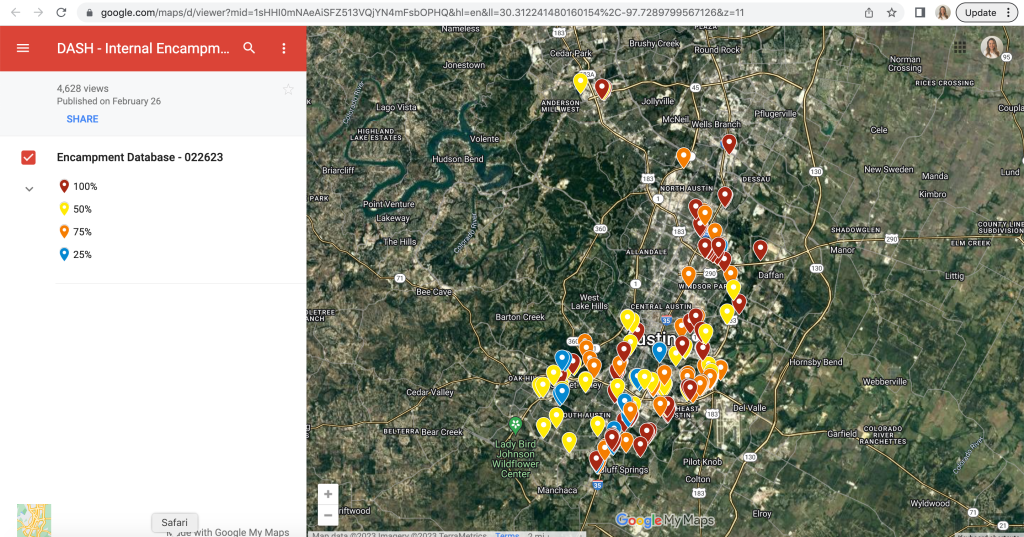
“A big fire is going to take place, and it’s going to burn up a lot of people up. It’s going to happen,” Hammonds predicted.
“I’ve been warning the city about this for over a year.”
In the year and half Hammonds has been documenting the camps, he claims to have regularly witnessed people with mental health and drug issues burn unsupervised fires for warmth and cooking.
“We have fires in these camps every year, but thank the Lord the fire department has been able to put them out very quickly,” he added.
The homeless sites are often nestled in wooded areas, surrounded by oak trees.
“It gets really hot and really dry in the summer,” the filmmaker explained. “These folks build fires, and these greenbelts, when it gets dry, it’s like a match waiting to go off.
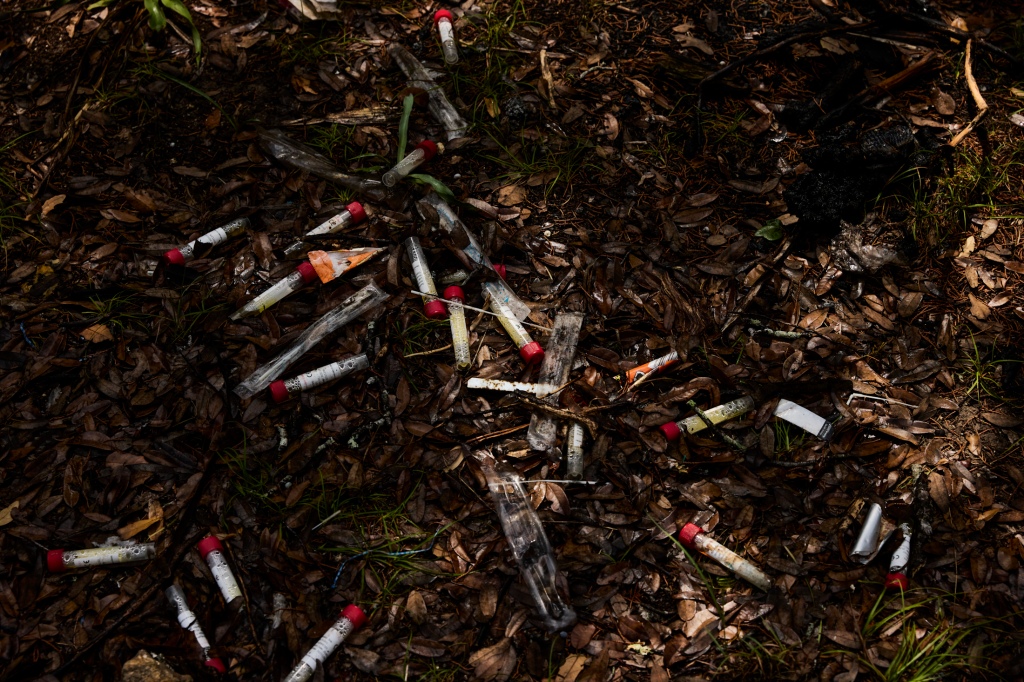

It’s going to happen… [somewhere like] the Williamson Creek Greenbelt. There’s one way into it and one way out.”
After Hammonds recently exposed a 300-person camp in South Austin, drawing national media attention, the city representatives for that area who had previously ignored complaints about the homeless, finally visited the site.
“With evidence of campfires for cooking or warmth, wildfire protection was a critical priority,” Austin Mayor Pro Tem Paige Ellis told Fox News.
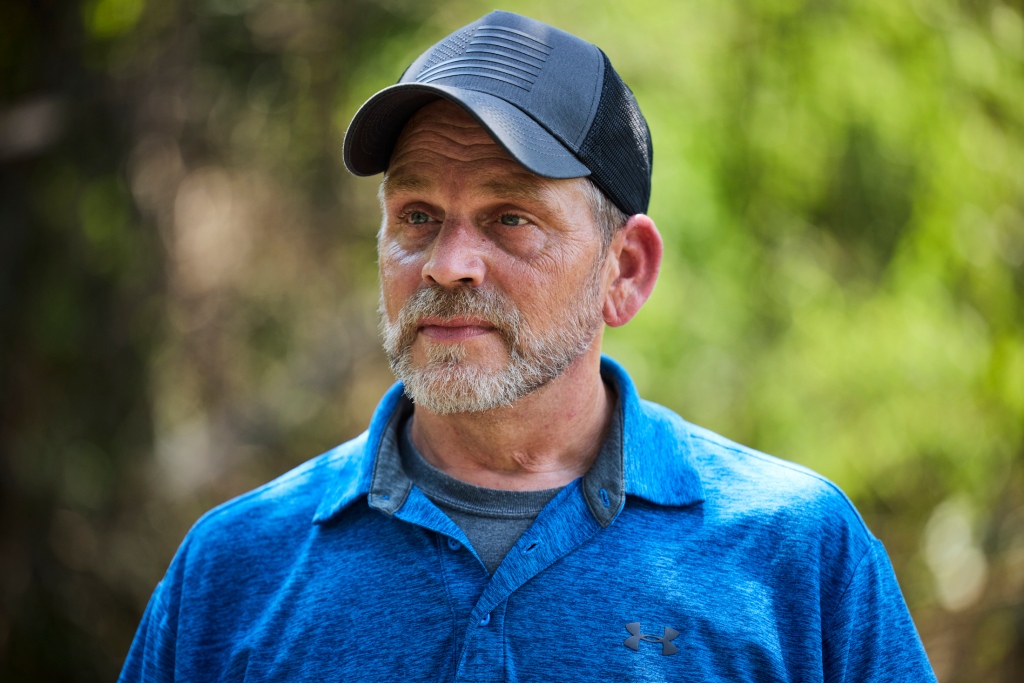
But even after that, the city gave the homeless the option of leaving the camp, only taking those who volunteered to go to a shelter and allowing the rest to stay.
Austin residents have flooded the police department with thousands of calls about how the homeless are starting fires or illegally camping in public trails, according to local station KXAN.
“I’m terrified about it,” a pregnant Krissy Curtis told the outlet. “They’re just choosing to be illegally out here, and they’re choosing to make it dangerous for everyone that’s trying to use the trail.”
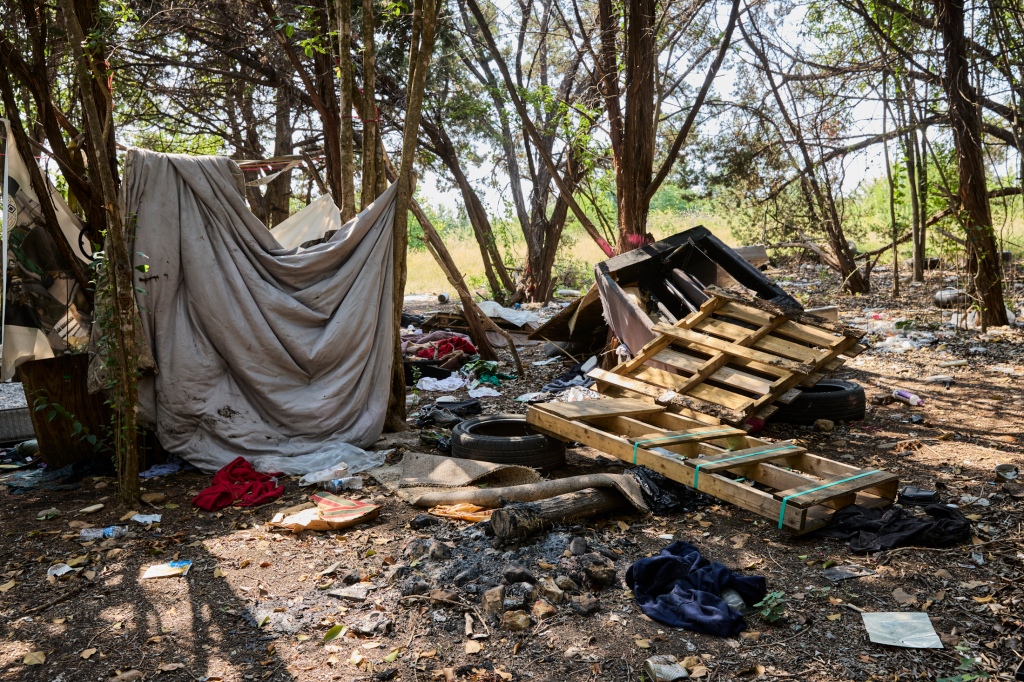
But most feel their pleas for help fall on deaf ears.
Another resident shared a photo of a homeless tent on the side of a busy road with an air conditioning unit illegally hooked up to a streetlight by a power cord stretching across the road .
“That camp has been there for six weeks despite local and state law prohibiting this,” said a disgruntled Texan who asked to remain anonymous. “Austin voters successfully made public camping illegal on May 1, 2021, yet Austin officials refuse to enforce the law.”
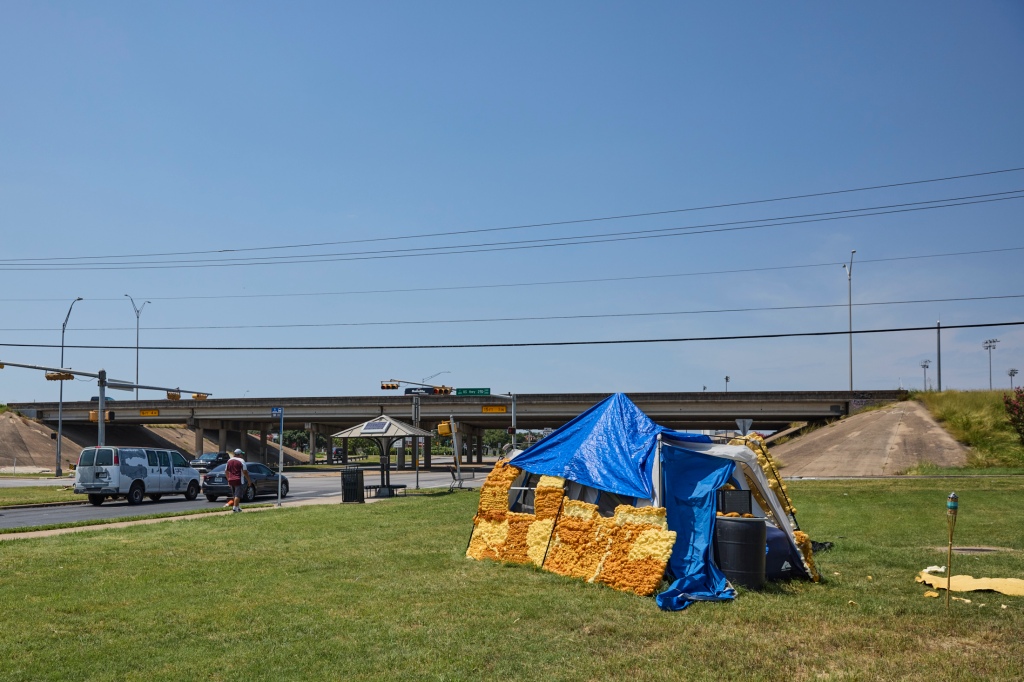
The City of Austin claims police do enforce the camping ban.
“When possible, the least intrusive and lowest level of force that achieves voluntary compliance has been a preferred method,” City Spokeswoman Jenny LaCoste-Caputo told The Post.
“This generally looks like progressive enforcement in practice [going from] verbal warning to citation to custody arrest.”
However, violating the camping ban is only a class C misdemeanor, which means the greatest level of enforcement permissible is usually a citation, the city added.
The blue city did not address how its own woke policies have exacerbated the homeless problem. With a shortage of nearly 400 officers, only emergency calls that involve life-threatening actions get patched through to 911.
All other calls, including most complaints about homelessness, are sent to Austin’s non-emergency 311 line.
During the pandemic, the previous mayor, Steve Adler, allowed the homeless to pitch tents in downtown Austin in the city’s most visited areas, like Sixth Street and Cesar Chavez Street.
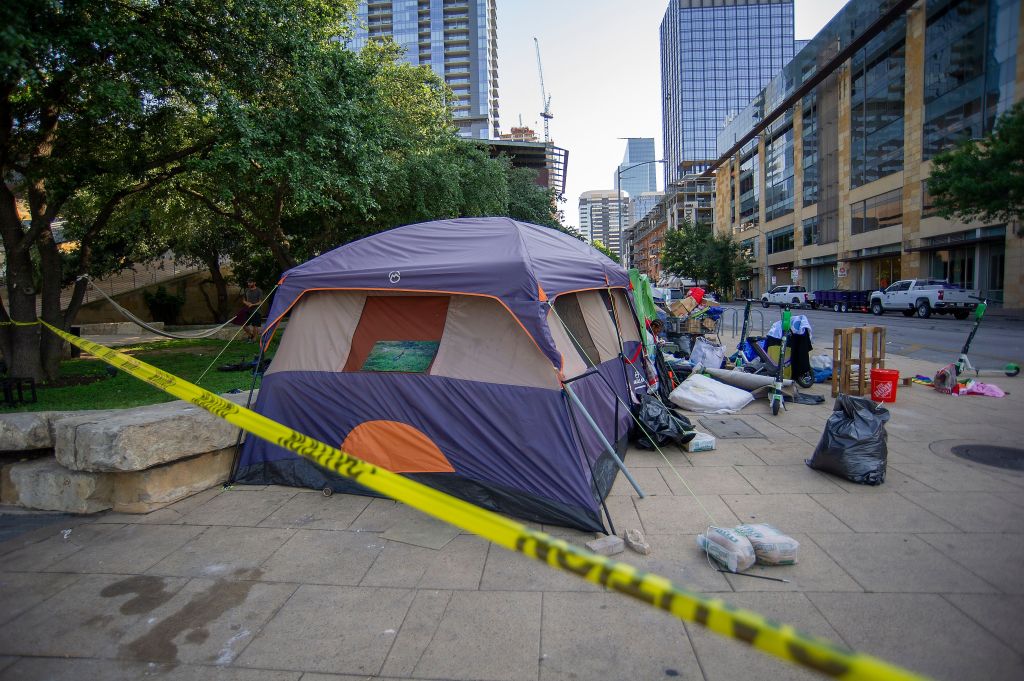
Adler infamously told residents to quarantine during Covid-19, but then went on a Mexican vacation himself.
His administration also defunded the Austin Police Department in 2020 — slashing its budget by a third — only to refund it a year later, under state pressure.
Anti-cop sentiment in Austin has created a public safety crisis, where cops have quit or retired in droves, forcing detectives to pause solving cases in order to patrol the city’s streets.
Current Mayor Kirk Watson, who took office in January, declined to be interviewed and instead teased that there would be a “major announcement” on homelessness coming soon.
Known as the most liberal part of the Texas, the local government takes pains to refer to those living on the streets as “people experiencing homelessness,” and also offers free health care to the unhoused, a county constable who works with the homeless told The Post.
“They know they’re going to get good services and get help; I think that’s a draw [for people to come here] as well,” said Constable David McAngus. “Once they get a MAP card, they can go to the doctor, go to the hospital, dental health, they can get eyewear.
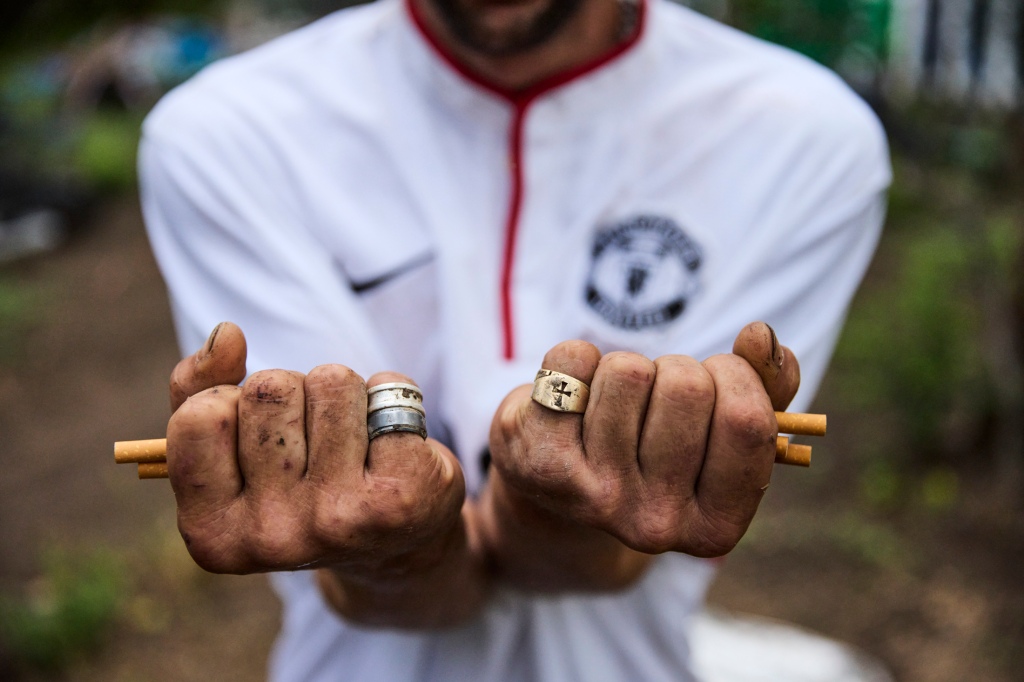
Central Health, the company that runs the health program, did not respond to The Post’s request as to whether Narcan was one of the medications provided to the homeless.
Narcan is used to save the lives of people who have overdosed on opioids and is effective against deadly Fentanyl which has been responsible for an increase in overdoses across the country in recent years.
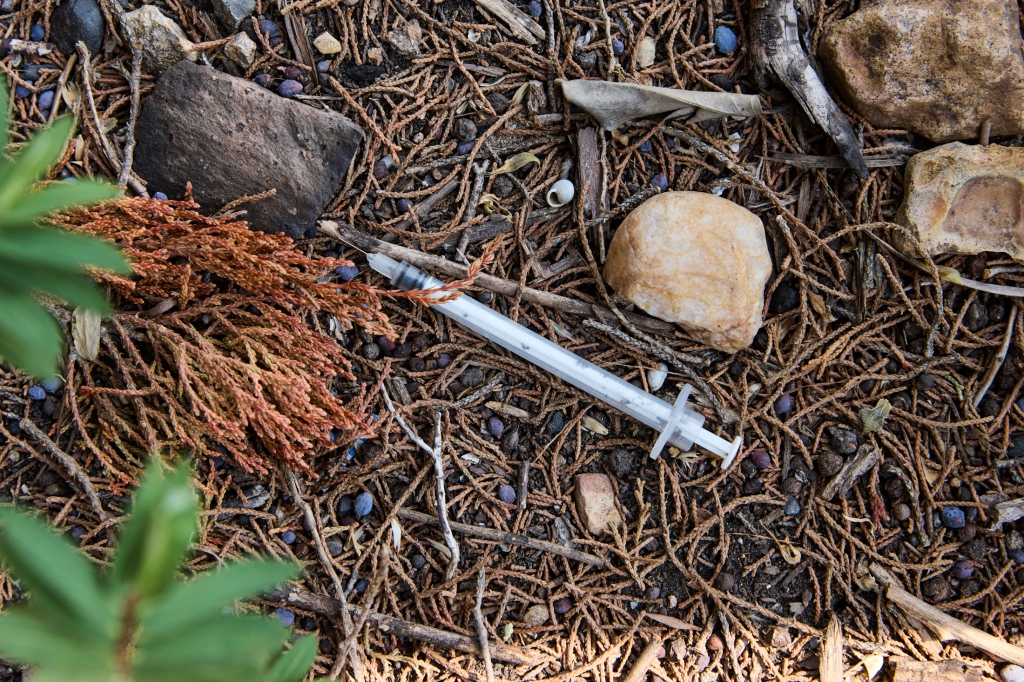
“Just to illustrate how bad it is in these camps, you just walk in and there are many full Narcan bottles and needles everywhere,” Hammonds explained.
He claims meth is the most used drug, and Constable McAngus added about 98% of those living in camps battle substance abuse.
“When they go to the shelters, they can’t smoke, they can’t drink, they can’t do drugs. They’re back on out the streets within 24-48 hours,” Hammond stated.
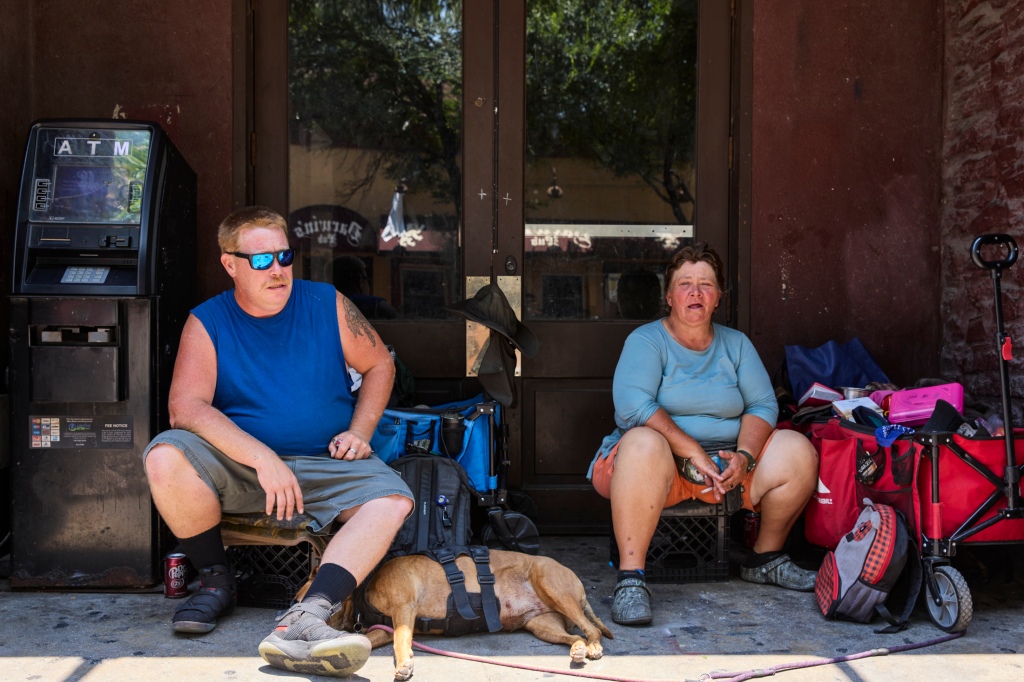
In order to feed their drug addiction, many practice “boosting,” he added.
“The main way they make money, they call it boosting — shop lifting, stealing,” Hammonds detailed. “They go out at night into the surrounding neighborhoods. They steal lawn equipment. They steal power tools, anything that is of value and they go to the pawn shops the next day. That’s how the make their money, by boosting.”
Children can sometimes be found living in these conditions, as Hammonds finds toys, diapers and even cribs in the woods.
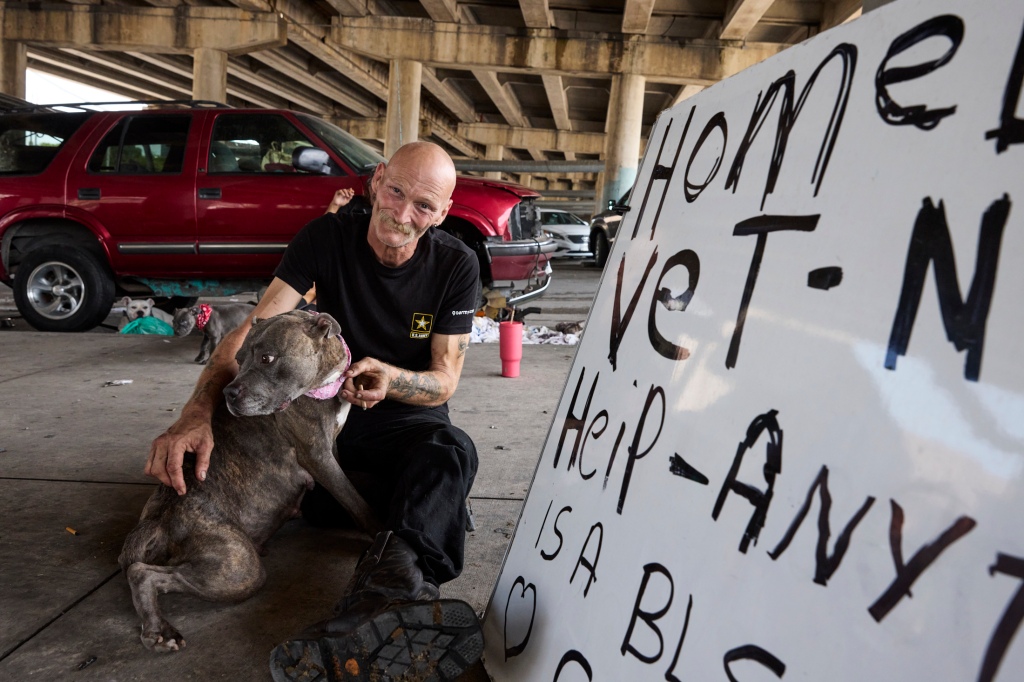
An engineer, Hammonds started documenting Austin’s homeless when he saw something that stopped him in his tracks. While out driving one day in 2021, he saw children emerge from a homeless camp.
“I saw a bunch of children coming out of woods, about 7 and 8 years old,” he recalled. “You would see there was a homeless camp. There was probably four or five of them, so I took out my phone and started videoing.”
The children’s faces haunted him, as his own children were the same age, prompting him to document the city’s homeless crisis on his Twitter profile.
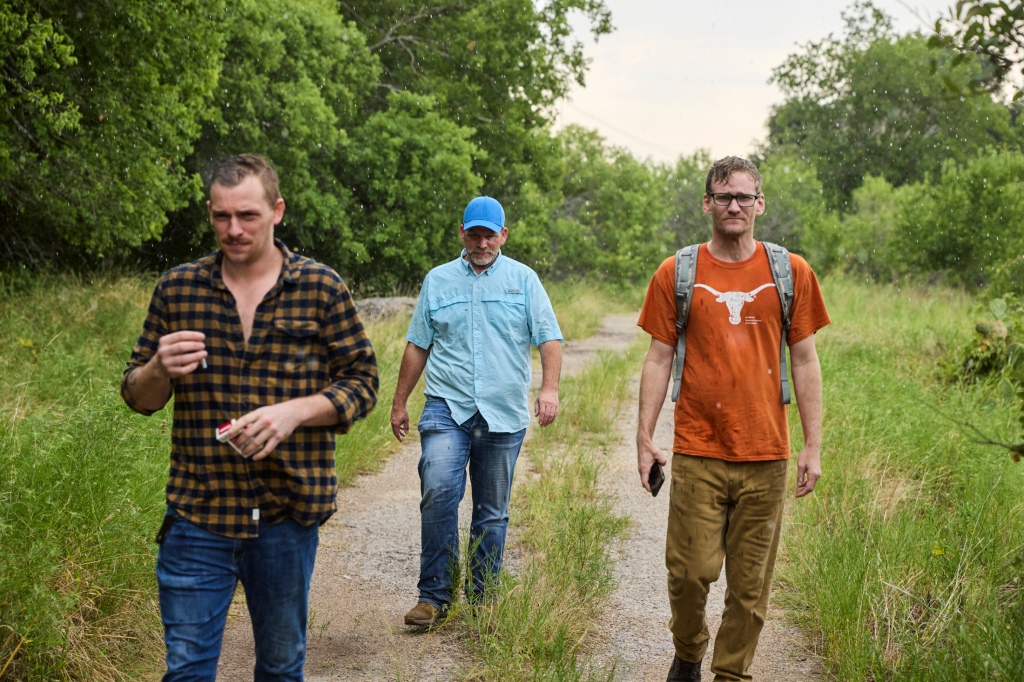
Wednesday night, Hammonds and his team found 10 and 14-year-old siblings, bundled up at a bus stop with their parents. They had been on the streets for four weeks.
Hammond and his team got them food and a hotel room for the night, while the family was placed on a wait list with thousands of others trying to get a spot in one of the city’s bursting at the seams shelters.
“You have people who have been waiting for years to get a bed,” McAngus said.
“Were are they going to go? It’s not illegal to be homeless in the State of Texas.”
Read the full article Here


